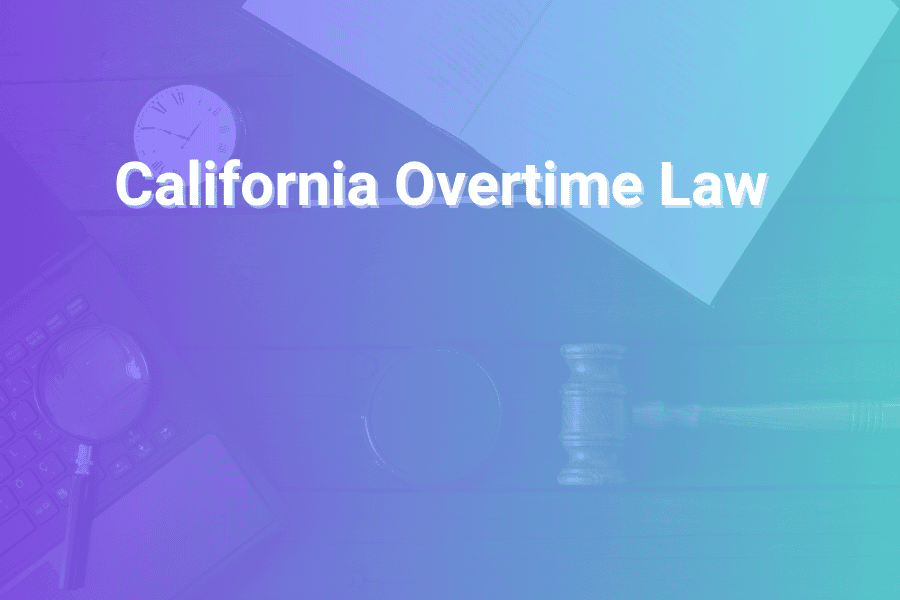
Overtime pay in California remains one of the most discussed employment topics among workers and employers alike. While federal labor law sets a national overtime standard, California stands apart for offering stronger daily and weekly protections.
These laws ensure that employees who work long hours receive fair compensation for their time and effort. Yet many still misunderstand how the rules apply, which employees qualify, and what recent updates mean for 2025.
In this article, you will learn how California overtime law works, who qualifies, what the exceptions are, how to calculate your overtime pay, and what to do if an employer fails to comply.
Understanding California’s Overtime Law Framework
California’s overtime law is anchored in the state’s Labor Code and the Industrial Welfare Commission (IWC) wage orders. The Division of Labor Standards Enforcement (DLSE) enforces these rules. The state follows both a daily and weekly overtime structure, unlike federal law, which applies only to weekly totals.
This dual approach means workers can earn overtime even if they don’t exceed forty hours a week, as long as they cross the daily hour limit.
For non-exempt employees, overtime begins after working more than eight hours in a single day or forty hours in a workweek. Double time applies after twelve hours in a day or after eight hours on the seventh consecutive day of work in the same week. These distinctions make California one of the most employee-friendly states in the nation.
Daily and Weekly Overtime Breakdown
The calculation of overtime pay depends on the number of hours worked in a day and week. To simplify:
- Time-and-a-half (1.5x regular rate): Applies after eight hours in a single day or after forty hours in a workweek. It also applies for the first eight hours on the seventh consecutive workday of a week.
- Double time (2x regular rate): Applies after twelve hours in one day and for hours exceeding eight on the seventh consecutive workday of a week.
For instance, if an employee works ten hours on Monday and nine hours on Tuesday, those extra hours above eight each day qualify for overtime pay, even if the total weekly hours are below forty.
Recent Developments: 2025 Updates
In 2025, overtime conversations have expanded beyond pay rates to include tax implications. The “No Tax on Tips and Overtime Act,” signed in July 2025, introduced a new federal exemption that temporarily removes federal income tax from tips and overtime earnings for eligible hospitality workers.
While federal adjustments are still being synchronized with California’s tax codes, the move reflects a broader effort to reduce the tax burden on hourly employees. California employers are now encouraged to track these exemptions separately for accurate reporting and compliance.
Who Qualifies for Overtime in California
Only non-exempt employees qualify for overtime. Non-exempt status covers hourly workers and some salaried employees who do not meet specific exemption criteria. The major exemptions fall into three broad categories: executive, administrative, and professional.
- Executive exemption: Applies to individuals who manage two or more employees, have authority in hiring or firing, and primarily perform management duties.
- Administrative exemption: Applies to employees who perform office or non-manual work related to business operations or management policies and use independent judgment regularly.
- Professional exemption: Applies to learned or creative professionals such as licensed doctors, lawyers, engineers, and architects who rely on advanced knowledge in a specialized field.
Each exempt category also requires a minimum salary threshold. In 2025, the minimum annual salary for exempt status in California equals twice the state minimum wage for full-time employment, translating to roughly $67,080 for employers with 26 or more workers.
Non-Exempt vs. Exempt Employees: Key Differences
An employee’s job title does not determine exemption status. The actual job duties and pay structure matter most. Employers sometimes misclassify workers as “managers” or “independent contractors” to avoid paying overtime, which can lead to serious legal consequences. Non-exempt employees must be paid at least the minimum wage for all hours worked and overtime when eligible. Exempt employees, however, are compensated on a salary basis and generally do not earn extra pay for additional hours.
How to Calculate Overtime Pay
The calculation is based on an employee’s regular rate of pay, which includes not just hourly wages but also certain bonuses, commissions, and incentive payments. To determine overtime:
- Add up all earnings (including eligible bonuses) for the week.
- Divide by total hours worked to find the regular rate.
- Apply 1.5x or 2x depending on the hours that qualify for overtime or double time.
Example: If an employee earns $25 per hour and works 10 hours in a day, the two extra hours are paid at $37.50 per hour. If the same person works 13 hours, the final hour is paid at $50 per hour under double time.
Special Situations and Alternative Workweeks
California allows certain industries to adopt Alternative Workweek Schedules (AWS). These arrangements let employees work more than eight hours a day without daily overtime, as long as the total weekly hours do not exceed forty.
AWS agreements must be approved by a two-thirds vote of the affected employees and filed with the state. Common examples include healthcare facilities, manufacturing plants, and design firms that prefer four 10-hour workdays instead of five 8-hour shifts.
Healthcare employees also follow special rules. For example, hospitals may operate under a 14-day schedule, where overtime applies only after eighty hours in two weeks, as long as the arrangement meets state conditions.
Rest Periods and Meal Breaks
California labor law guarantees both meal breaks and rest periods. Employees working more than five hours in a day must receive a 30-minute unpaid meal break. A second meal break is required for shifts over ten hours. Additionally, employees are entitled to a paid 10-minute rest period for every four hours worked. Failing to provide these breaks can result in an additional hour of pay for each missed meal or rest period.
Recordkeeping and Employer Responsibilities
Employers in California must maintain accurate time and payroll records for at least three years. These records must show when employees start and end work, meal breaks, total hours worked each day, and rates of pay. If an employer fails to keep proper records, the employee’s own reasonable evidence or testimony can be used in wage claims or court proceedings.
Employers must also display current wage orders and overtime rules in an accessible workplace location. Regular training on wage compliance is encouraged to prevent errors and penalties.
Penalties for Violations
Employers who fail to pay overtime face significant consequences. Penalties can include:
- Payment of unpaid wages plus interest
- Liquidated damages
- Civil penalties under the Labor Code
- Possible criminal charges in cases of willful violation
Employees can file claims with the DLSE or pursue civil lawsuits. The statute of limitations for unpaid overtime claims is typically three years, extended to four years for violations involving unfair business practices.
Overtime and the Gig Economy
California’s growing gig economy has complicated overtime eligibility. The ABC test introduced under Assembly Bill 5 defines who qualifies as an employee versus an independent contractor. Under this test, workers are presumed employees unless:
A) They are free from control of the hiring entity in performing work,
B) Their work falls outside the usual business of the hiring company, and
C) They operate an independently established business.
Gig workers misclassified as contractors lose access to overtime and minimum wage protections. As of 2025, the state continues refining guidelines for platform-based workers such as drivers and delivery couriers.
Recent Wage and Salary Adjustments
As of January 2025, California’s state minimum wage rose to $16 per hour for all employers, with several local jurisdictions setting higher rates. This increase automatically affects exempt salary thresholds and impacts overtime calculations, since higher base pay results in higher overtime compensation. Employers must stay updated on both state and local wage ordinances.
How Remote Work Affects Overtime
With remote and hybrid work models becoming permanent in many industries, tracking hours accurately has become more critical. California requires employers to maintain the same overtime and recordkeeping standards for remote employees as for those in physical offices. Employers must implement reliable digital timekeeping systems and ensure employees receive mandated meal and rest breaks even when working from home.
Employee Rights and Steps to Recover Unpaid Overtime
If an employee suspects unpaid overtime, they can:
- Review their pay stubs and time records.
- Report discrepancies to the employer’s HR or payroll department.
- File a wage claim with the DLSE or consult a labor attorney.
The DLSE investigates claims, conducts hearings, and can issue binding orders requiring back pay and penalties. Workers are protected from retaliation when asserting their rights.
Employer Best Practices for Compliance
To stay compliant and avoid costly disputes, employers should:
- Audit job classifications annually.
- Track daily hours using automated timekeeping.
- Train supervisors on overtime rules.
- Obtain employee consent for alternative workweeks.
- Pay overtime in the next regular payroll cycle.
Transparent communication about overtime policies also builds trust and reduces turnover.
Why California’s Overtime Law Stands Out
Compared to federal law under the Fair Labor Standards Act (FLSA), California’s framework is stricter and more protective. Its daily overtime rule, seventh-day premium, and higher salary thresholds place more responsibility on employers. This reflects the state’s broader labor philosophy: to reward long hours with fair pay and to discourage excessive scheduling.
The Future of Overtime Regulation in California
Labor experts anticipate that overtime and wage laws will continue to evolve as automation, flexible scheduling, and new tax laws reshape the employment landscape. California’s legislature is reviewing proposals that could expand overtime eligibility for more salaried workers and improve enforcement transparency. The ongoing debate over remote work rights and tip-tax reforms will likely influence these adjustments.
Conclusion
California overtime law provides robust protection for employees who work beyond standard hours. Its combination of daily, weekly, and double-time rules ensures fair pay and accountability in every industry.
For workers, understanding these rights means knowing when extra pay is due and how to claim it. For employers, compliance is not just a legal duty but a sign of respect for the workforce that drives their success. Staying informed about 2025 updates — from wage increases to new tax exemptions — helps both sides maintain balance in an ever-changing work environment.
